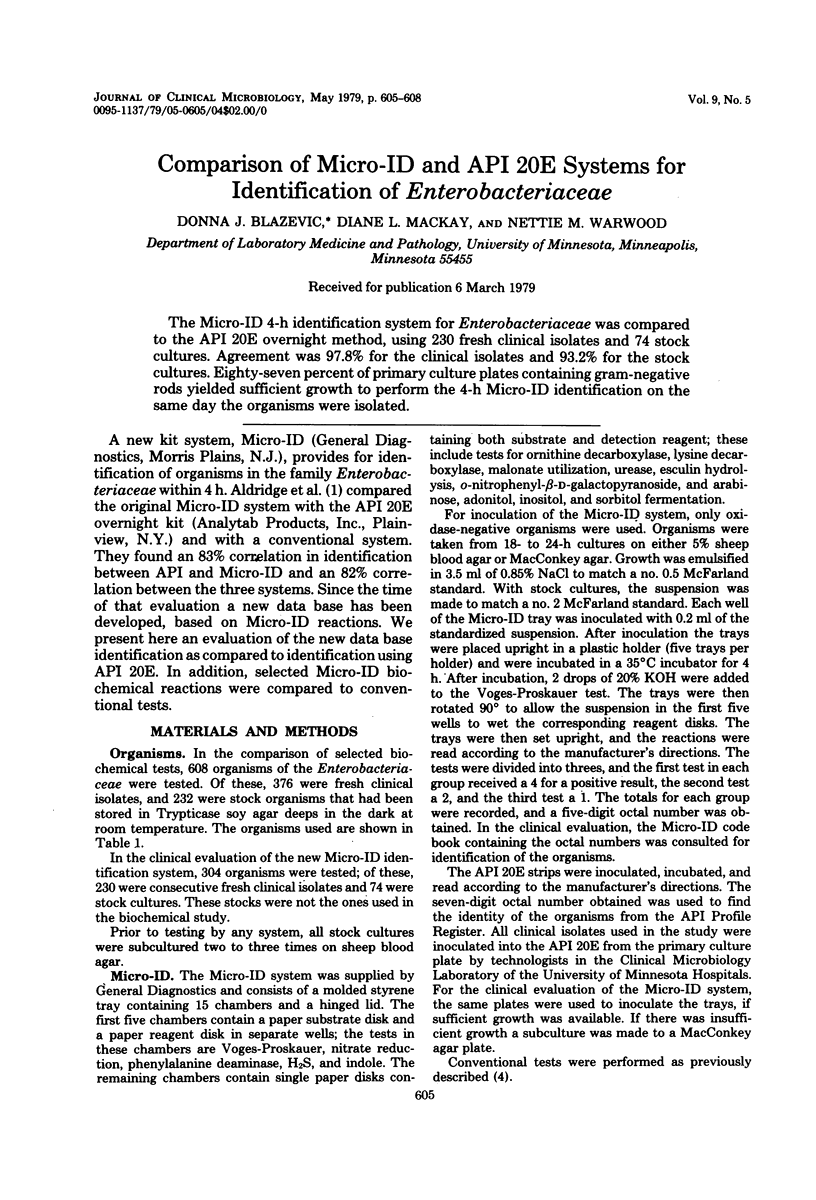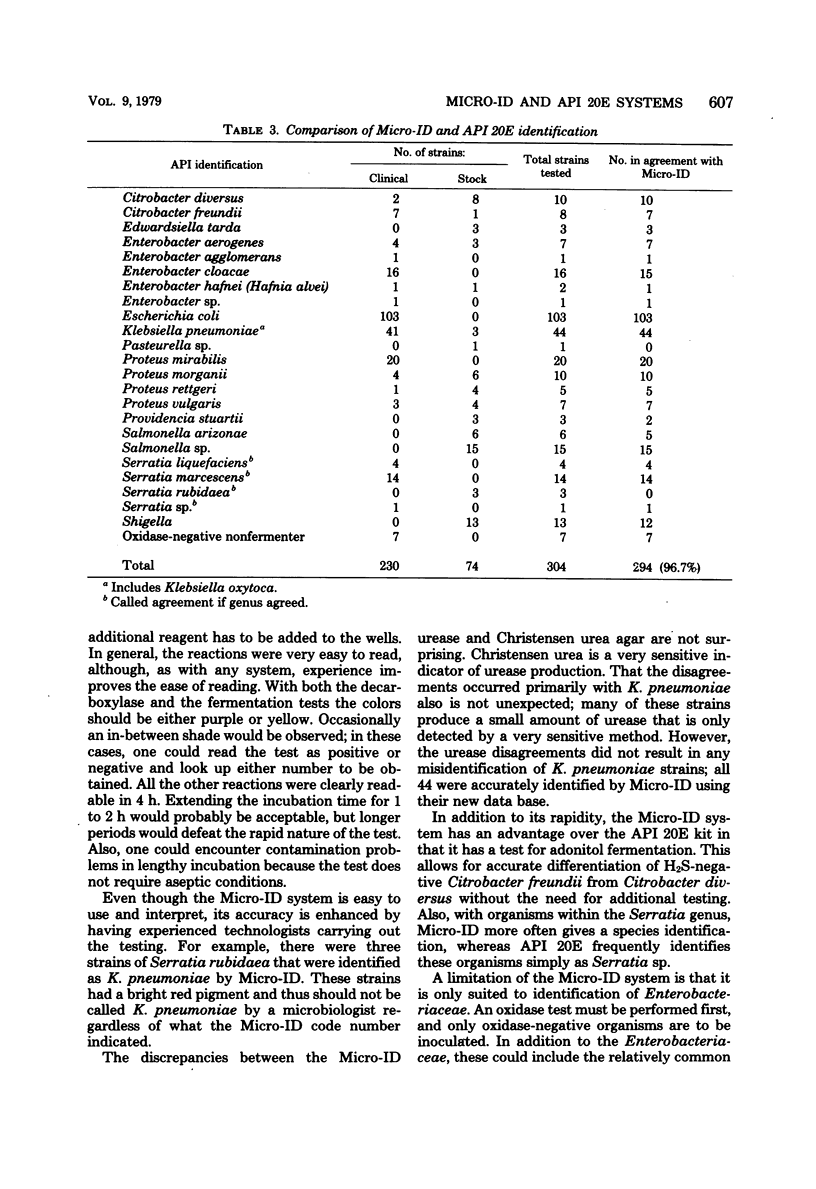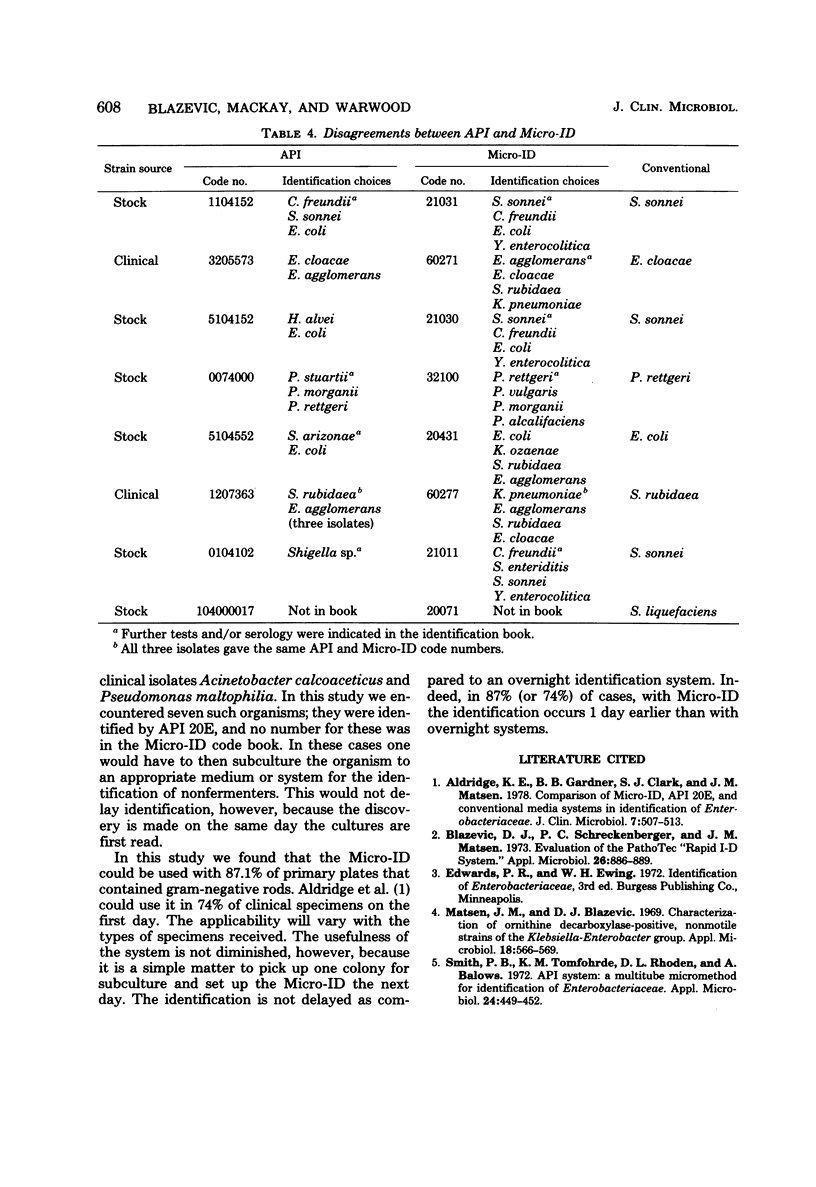Abstract
The Micro-ID 4-h identification system for Enterobacteriaceae was compared to the API 20E overnight method, using 230 fresh clinical isolates and 74 stock cultures. Agreement was 97.8% for the clinical isolates and 93.2% for the stock cultures. Eighty-seven percent of primary culture plates containing gram-negative rods yielded sufficient growth to perform the 4-h Micro-ID identification on the same day the organisms were isolated.
Full text
PDF



Selected References
These references are in PubMed. This may not be the complete list of references from this article.
- Aldridge K. E., Gardner B. B., Clark S. J., Matsen J. M. Comparison of micro-ID, API 20E, and conventional media systems in identification of Enterobacteriaceae. J Clin Microbiol. 1978 Jun;7(6):507–513. doi: 10.1128/jcm.7.6.507-513.1978. [DOI] [PMC free article] [PubMed] [Google Scholar]
- Blazevic D. J., Schreckenberger P. C., Matsen J. M. Evaluation of the PathoTec "Rapid I-D System". Appl Microbiol. 1973 Dec;26(6):886–889. doi: 10.1128/am.26.6.886-889.1973. [DOI] [PMC free article] [PubMed] [Google Scholar]
- Matsen J. M., Blazevic D. J. Characterization of ornithine decarboxylase-positive, nonmotile strains of the Klebsiella-Enterobacter group. Appl Microbiol. 1969 Oct;18(4):566–569. doi: 10.1128/am.18.4.566-569.1969. [DOI] [PMC free article] [PubMed] [Google Scholar]
- Smith P. B., Tomfohrde K. M., Rhoden D. L., Balows A. API system: a multitube micromethod for identification of Enterobacteriaceae. Appl Microbiol. 1972 Sep;24(3):449–452. doi: 10.1128/am.24.3.449-452.1972. [DOI] [PMC free article] [PubMed] [Google Scholar]


